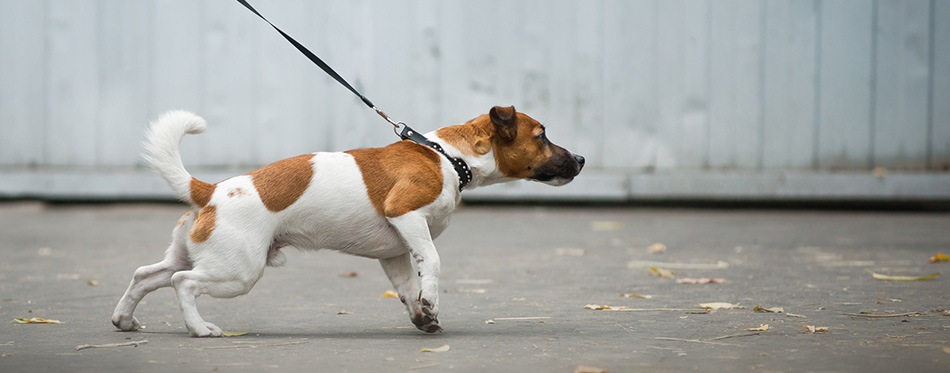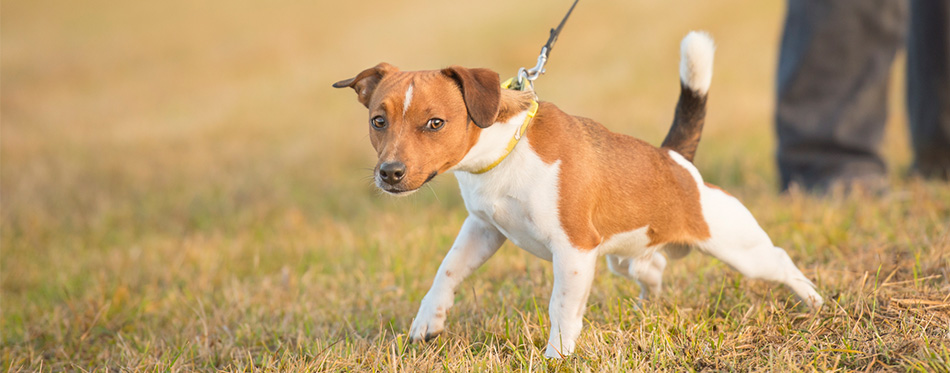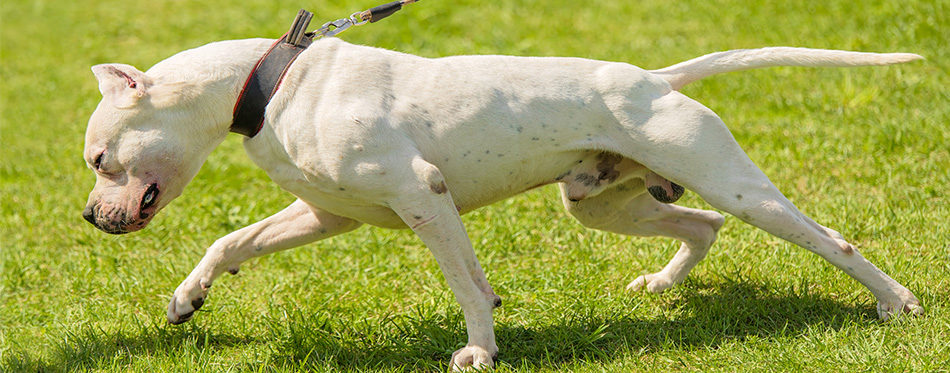Walking your dog is one of the easiest and most practical ways to keep your pet healthy and happy. When it comes to walking the dog, it is often best to do it with a leash attached to your pet’s collar or dog harness. This is for your pet’s safety and your own convenience. The issue here, of course, is that some dogs don’t like having their movements restricted or limited. As such, they tend to pull on their lead. The pet parent who can walk his or her dog in a calm manner and without any evidence of leash-pulling is often the subject of envy of other pet parents. If you want to walk your pet without your dog pulling on its leash, here’s how you can put a stop to such a behavior.

Choose the Right Equipment
When it comes to preventing your dog from pulling on its leash, you’ve got to start with the right equipment. These can include an appropriate harness and an equally-appropriate dog leash. Let’s find out more about your options.
Dog Harness
When choosing the best dog harness, it is often critical to understand a dog’s innate opposition reflex. This refers to the dog’s natural response to pressure. If the pressure comes from the back, the natural reaction of the dog is to move forward. For example, if you try to push the hind end of a puppy, you will feel that it is resisting the downward movement of its back. It will try to resist it by pushing its hind part in the opposite direction. The same is true when pulling on their lead. Dogs move forward because of the backwards pull of the leash. For more options head over to our guide on the best puppy harnesses.
So how does this factor into your choice of the best dog harness, you ask?
Dog harnesses always have attachment points for the leash. The location of this attachment point can either promote the opposition reflex in dogs or prevent it. That is why there are dog harnesses that manufacturers market as anti-opposition reflex.
Dog harnesses with leash attachment points located at the back are more prone to canine leash-pulling. Why? The leash attaches at the back which, in turn, pulls on the front chest panel. The chest panel or strap moves backward. The natural reaction of the dog is to move forward to counteract the pressure on the chest.
On the other hand, a leash attachment point on the front of the dog will dissuade the dog from pulling on its leash. The placement of the attachment point in front of the dog’s body will mean that the dog has to turn its body to the front, too. This means they will have to move “backwards” in the direction of their target. For a dog, this is a very “unnatural” movement.
As such, the best dog harness for pulling dogs is one whose leash attachment point is in the front section of the harness.
There is another dog harness that is perfect for pullers. However, they may be too intimidating for some pet parents. These are head harnesses. Like the no-pull, front leash-attaching harness, the head harness will turn the dog’s head. This will make it unable to move forward in a more natural manner. Head harnesses are good for larger dogs that may be stronger than their human owners.
Dog Leash
The best dog leashes for canines that have a strong tendency to pull are those that are short. These often come shorter than 5 feet with 4 feet being the standard. They allow for better control of the dog’s movements and can play a role in the maintenance of dog safety in urban settings.
There are pet parents who use the best retractable dog leash. However popular these may be, many veterinarians do not recommend them. This is because this type of dog leash may teach a dog to pull because of the extra-length of the leash. You can retract it to a short 4-foot leash, of course. But you’ll be better off with a shorter leash than a retractable one.
The issue with retractable dog leashes is that it can be dangerous for your pet. This is often the case among pet parents who are not quick enough in retracting the leash when a threat presents itself. For instance, the dog may already see another dog from afar. It may already start darting for the other dog before the dog’s owner can retract the leash to a shorter length. Moreover, most retractable dog leashes come with very thin cords. These can tighten around dogs and cause injuries.
Treats
Okay, so dog treats are not equipment. However, they are your most important tools to help stop your dog from tugging on its leash. Some pet parents think of treats as “bribe”, but this is never the case. Treats are worthy rewards for your dog’s ability to display a particular behavior that you desire. In this case, the desirable behavior is not pulling on its leash. Think of it as an incentive for your dog.
Treats are a good way for encouraging dogs to keep on doing those things that we want from them. As such, if we want them not to pull on their leash, then we must reward them every time they walk nicely.
Yummy doggie treats can also be a great tool for distracting your pet. For instance, instead of it focusing on another dog, the prospect of having a delicious treat will keep it focused on the treat. If you do this as part of your dog-walking routine, your dog will know that you always have delicious treats in your pocket. This alone will make you a more interesting “subject” for your dog than anything else. As such, your dog will pay more attention to you.
When picking the right treat to use, make sure that it is something extraordinary. It must be something that your dog only gets to eat on very rare occasions. That’s why these are something special.
Make sure you have enough treats to last the walk. It is often a good idea to carry a belt bag or a pouch which you can stuff with yummy dog treats.
Teach Your Dog to Walk at Your Pace
Getting the right equipment doesn’t always guarantee that your dog will no longer pull on its leash. You will also have to show it how to walk in a calmer and more confident manner. Here’s how.

Practice In a Quiet Area
In the initial stages of teaching your dog how to walk in a more desirable manner, it is ideal to practice in a safe and quiet area. There should be no distractions at first. This is to allow your dog to give its full attention to what you are trying to teach. If there are other pets around, your dog may have its attention on these other animals.
If you have a fenced yard, this is the best place to start your training. It may also be helpful to remind the other members of your household not to “disturb” you and your dog during the training session. This can include avoiding the preparation and cooking of meals that can send its scent into the yard. You don’t want your dog’s attention on that yummy smell. You want your dog’s attention on you.
Exercise Your Dog before the Training Session
You would want your dog to walk in a calm and composed manner beside you. One of the easiest ways to do this is by engaging your dog in some playtime. This is to get its heart beating faster, tiring the dog in the process.
Tiring your dog will make it a lot easier for it to walk at your pace. It will also not have enough energy left to pull on the leash.
Reward Your Dog’s Attention
When walking with your dog, always make sure that it has its attention on you. You can ensure this by rewarding it with a treat if it walks at your pace. This will imprint on its mind that walking beside you and at your pace will result in a yummy treat.
Always start your walk with your dog at your side. As you take a step forward, your dog should also walk with you mimicking your pace. It is okay if it will be walking slightly ahead of you. However, it is important to observe its leash. This should remain loose at all times. That is why it’s better to get a shorter leash than a longer one so you’ll have a better idea as to the tension on the leash. What you want to see is for the leash to form a classic U-shape from your hand to the dog’s collar or body harness.
If your dog is able to maintain such a pace, say “yes” and give it its yummy treat. Your pet may not know why you said “yes” at first, but it will soon associate the verbal cue to its walking beside you and the yummy treat.
You can reward your dog every 5 to 8 steps during the initial stages of the training. You can then lengthen the time interval between the giving of treats.
If your dog walks faster than you that its leash is now becoming tighter, stop walking at once. Resist the temptation to walk towards your dog. Let your dog come back to your side. You can call it by its name if you wish. You can also show your dog its yummy treat. If it stops walking and comes back to you, say “yes” and give its treat. You can then resume your walk.
Every time the leash starts to tighten, stop walking. Let your dog come back to you and mark the behavior before giving the treat.
Over time, your dog will learn that the only time it will receive the yummy treat is when it stays by your side.
Play the Penalty Yards Game
You can also help teach your dog to remain by your side during a walk by playing a modified version of football. The objective is to walk your dog towards a “goal” at your own pace. If it pulls its leash, you impose penalty yards.
Here’s how it works. Place a yummy treat some distance from the starting line. About 20 feet should be enough. The yummy treat is the “goal”. You will walk your dog towards the “goal”. It should remain at your side or slightly ahead of you at all times. If it pulls on its leash, you go back to the starting line. Every time your dog draws on its leash tight, you go back to square one. Sooner or later, your dog will realize that pulling on its leash will never make it reach the “goal”.
Using the “dead halt” technique may not be effective in this instance. Why? This is tantamount to the yards gained in a game of football. Your dog will stop pulling on its leash, yes. But it doesn’t mind. This is because it is now closer to its goal.
But if you impose the penalty yards, it will learn that pulling on its leash will move it further from its goal.

Play with Your Dog the Follow-Me Game
There is another game you can play with your dog to help it learn how to walk at your pace. They call this the “follow me” game.
Hold the leash and take several steps backward. This will somehow “tighten” the leash. What you want your dog to do is to turn around and follow you. As your pet approaches you, say “yes” and then give it its yummy treat.
This game will teach your dog to focus on you. This will also teach it to move with you. Over time, your dog will follow you whenever you move farther away from it.
Sources:
- How to Stop Your Dog Pulling on the Lead – Blue Cross
- How to Train Your Dog to Walk Nicely on the Lead – RSPCA

